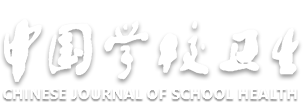Effectiveness analysis of movement education on the development of fundamental motor skills in preschool children
-
摘要:
目的 了解动作教育理念对3~6岁幼儿基本动作技能的影响,为提高教育质量、促进幼儿全面发展提供参考。 方法 2022年8月—2023年6月,采用方便抽样方法选取青岛某幼儿园592名3~6岁正常发育幼儿为研究对象,随机分为干预组(基于动作教育理念设计体育活动)和对照组(原教学计划),进行为期24周(每周2次,每次40 min)的干预。采用粗大动作发育测试第二版(TGMD-2)评估幼儿的粗大动作,并用重复测量方差分析两组干预前后数据。 结果 除跑和踢球外,干预组与对照组粗大动作、移动动作、操作动作及各分项指标的组别主效应(F组别=18.78~104.77)、时间主效应(F时间=243.23~3 003.19)以及组别×时间交互效应(F组别×时间=14.01~322.91)均有统计学意义(P值均<0.05)。进一步简单效应分析结果显示,干预前,干预组与对照组的粗大动作[(48.95±10.65)(45.87±10.98)分]、移动动作[(25.93±7.31)(23.46±7.32)分]、操作动作[(23.15±4.40)(22.40±4.69)分]总分差异均无统计学意义(F值分别为3.69,2.94,1.90),干预组与对照组移动动作和操作动作各分项指标得分差异亦均无统计学意义(F=0.01~3.58)(P值均>0.05);干预后,干预组粗大动作、移动动作和操作动作总分[(75.92±9.48)(38.12±5.40)(37.80±4.92)分]均优于对照组[(59.52±12.12)(30.71±7.47)(28.81±5.54)分](F值分别为168.15,97.58,210.71)、亦均优于干预前(F干预组值分别为3 498.90,1 438.27,2 431.24;F对照组值分别为545.58,309.18,283.29),干预组各分项指标得分(除跑和踢球外)均优于对照组(F=43.57~297.71)、且两组各分项指标得分均优于干预前(F干预组=300.58~858.65,F对照组=12.28~135.64)(P值均<0.01)。 结论 基于动作教育理念设计的体育活动更能促进幼儿的基本动作技能发展。 Abstract:Objective To understand the influence of the concept of movement education on the fundamental motor skills of preschool children aged 3-6, so as to provide a reference for improving the quality of preschool education and promoting the all-round development of preschool children. Methods From August 2022 to June 2023, 592 normally developing preschool children aged 3-6 in a certain kindergarten in Qingdao were selected as the research objects by convenience sampling. They were randomly divided into the intervention group (physical education activities designed based on the concept of movement education) and the control group (original teaching plan). The intervention lasted for 24 weeks (twice a week, 40 minutes each time). Test of Gross Motor Development-2 (TGMD-2) was used to evaluate the children's gross motor skills, and repeated-measures analysis of variance was used to analyze the data of the two groups before and after the intervention. Results Except for running and kicking, the group main effects (Fgroup=18.78-104.77), time main effects(Ftime=243.23-3 003.19), and other interactive effects between group and time (Fgroup×time=14.01-322.91) were of statistical significances for gross motor, movement motor, manipulative motor and each sub-indicator between intervention group and control group. Further simple effect analysis results showed that, before intervention, there were no statistically significant differences in the total scores of gross motor (48.95±10.65, 45.87±10.98), movement motor (25.93±7.31, 23.46±7.32) and manipulative motor (23.15±4.40, 22.40±4.69) between the intervention group and the control group (F=3.69, 2.94, 1.90, P > 0.05); and two goups were also found of no statistical significance in the each sub-indicator of movement and manipulative motor (F=0.01-3.58, P > 0.05); after intervention, the total scores of gross motor, movement motor, and manipulative motor in the intervention group (75.92±9.48, 38.12±5.40, 37.80±4.92) were all better than those in the control group (59.52±12.12, 30.71±7.47, 28.81±5.54) (F=168.15, 97.58, 210.71), and the total indicators of both goups had better scores than those before the intervention (Fintervention=3 498.90, 1 438.27, 2 431.24; Fcontrol=545.58, 309.18, 283.29)(all P < 0.01); after intervention, the intervention group had better scores in all sub-indicators (except for running and kicking) than the control group (F=43.57-297.71), and the each sub-indicator of both goups had better scores than those before the intervention (Fintervention=300.58-858.65; Fcontrol=12.28-135.64)(all P < 0.01). Conclusion Physical education activities designed based on the concept of movement education could better promote the development of children's fundamental motor skills. -
Key words:
- Motor activity /
- Motor skills /
- Intervention studies /
- Health promotion /
- Child, preschool
1) 利益冲突声明 所有作者声明无利益冲突。 -
表 1 两组幼儿干预前后移动动作得分比较(x±s)
Table 1. Comparison of movement motor scores between two groups of children before and after intervention(x±s)
组别 干预前后 人数 跑 立定跳 单脚跳 前跨跳 前滑步 侧滑步 移动动作总分 干预组 干预前 368 4.79±1.13 3.64±1.46 4.69±2.18 3.57±1.26 4.16±1.93 4.97±1.92 25.93±7.31 干预后 368 6.12±1.09 5.28±1.41 7.28±1.87 5.47±0.80 6.61±1.25 7.36±1.07 38.12±5.40 对照组 干预前 224 4.46±1.17 3.36±1.45 3.63±2.42 3.45±1.31 3.74±1.90 4.79±2.21 23.46±7.32 干预后 224 5.55±1.13 4.12±1.36 5.32±2.30 4.40±1.26 5.40±1.91 5.91±1.98 30.71±7.47 F组别值 14.39** 22.37** 39.75** 24.91** 20.82** 18.78** 40.85** F时间值 327.85** 243.23** 452.39** 441.27** 379.17** 302.03** 1 383.21** F组别×时间值 3.28 32.87** 20.03** 48.82** 14.01** 39.71** 89.58** 注:**P<0.01。 表 2 两组幼儿干预前后操作动作得分比较(x±s)
Table 2. Comparison of manipulative motor scores between two groups of children before and after intervention(x±s)
组别 干预前后 人数 原地拍球 踢球 双手接球 定点击球 上手投球 地滚球 操作动作总分 干预组 干预前 368 3.82±1.28 5.24±0.83 2.45±0.80 4.69±1.44 3.14±1.75 3.80±1.04 23.15±4.40 干预后 368 6.78±1.56 6.84±0.96 4.27±1.16 8.02±1.34 5.64±1.74 6.26±1.03 37.80±4.92 对照组 干预前 224 3.87±1.11 4.92±0.86 2.39±0.62 4.65±1.65 2.77±1.40 3.80±0.91 22.40±4.69 干预后 224 5.37±1.55 6.08±0.97 3.21±1.09 5.22±1.37 4.19±1.93 4.73±1.06 28.81±5.54 F组别值 24.83** 39.61** 36.89** 104.77** 25.28** 59.27** 84.67** F时间值 740.23** 542.06** 368.51** 355.00** 387.63** 572.29** 1 901.02** F组别×时间值 78.18** 13.61 52.35** 177.33** 29.45** 117.06** 291.04** 注:**P<0.01。 -
[1] PAYNE V G, LARRY D I. Human motor development: a lifespan approach[M]. 11th ed. New York: Routledge, 2025: 4-6. [2] FROSTIG M. Movement education: theory and practice[M]. Chicago: Follet Education Corp, 1970: 6-22. [3] LARSSON H. Learning movements: new perspectives of movement education[M]. New York: Routledge, 2021: 3-16. [4] 周毅, 庄弼, 辛利. 幼儿早期发展与教育中最重要的内容: 动作教育与综合训练[J]. 广州体育学院学报, 2014, 34(6): 108-120.ZHOU Y, ZHUANG B, XIN L. Most important elements of early childhood development and education: movement education and comprehensive training[J]. J Guangzhou Sport Univ, 2014, 34(6): 108-120. (in Chinese) [5] 辛利, 庄弼, 周毅. 动作教育在幼儿园课程设置中的地位[J]. 体育学刊, 2015, 22(6): 71-74.XIN L, ZHUANG B, ZHOU Y. Status of movement education in kindergarten curriculum setting[J]. J Phys Educ, 2015, 22(6): 71-74. (in Chinese) [6] RUDD J, DAVIES K F, CALLAGHAN L O, et al. Nonlinear pedagogy and the athletic skills model[M]. New York: Routledge, 2021: 5-8. [7] SEVIMLI-CELIK S, JOHNSON J E. Teacher preparation for movement education: increasing pre-service teachers' competence for working with young children[J]. Asia Pac J Teach Educ, 2015, 44(3): 274-288. [8] ALTINKOK M. The effects of coordination and movement education on preschool children's basic motor skills improvement[J]. Univ J Educ Res, 2016, 4(5): 1050-1058. [9] 国家体育总局. 国民体质测定标准(幼儿部分)(2023年修订)[Z]. 北京: 国家国民体质监测中心, 2023.General Administration of Sport of China. National physical fitness testing standards for preschool children (Revised Edition 2023)[Z]. Beijing: National Physical Fitness Monitoring Center, 2023. (in Chinese) [10] BANDEIRA P F R, DUNCAN M, PESSOA M L, et al. TGMD-2 short version: evidence of validity and associations with sex, age, and BMI in preschool children[J]. J Motor Learn Dev, 2020, 8(3): 528-543. [11] 汪超. 幼儿园体育活动设计与指导[M]. 3版. 上海: 复旦大学出版社, 2024: 48-64.WANG C. Design and guidance of physical activities in kindergartens[M]. 3 ed. Shanghai: Fudan University Press, 2024: 48-64. (in Chinese) [12] 赵锐. 幼儿园健康体育课程[M]. 南京: 南京师范大学出版社, 2023: 43-46.ZHAO R. Kindergarten health and physical education curriculum[M]. Nanjing: Nanjing Normal University Press, 2023: 43-46. (in Chinese) [13] HENRY M, DARENDELI A, TVRDY T, et al. Influence of age and feedback modality on the proprioceptive sense of force: insights from motor unit recordings[J]. J Neurophysiol, 2025, 133(4): 1103-1115. [14] 李翰君. 运动技能学习与控制[M]. 北京: 科学出版社, 2024: 22-24.LI H J. Motor skill learning and control[M]. Beijing: Science Press, 2024: 22-24. (in Chinese) [15] ENOKA R M. Neuromechanics of human movement[M]. 6th ed. Cha-mpaign, IL: Human Kinetics, 2024: 195-207. [16] SORTWELL A, RAMIREZ-CAMPILLO R, MURPHY A, et al. Associations between fundamental movement skills, muscular fitness, self-perception and physical activity in primary school students[J]. J Funct Morphol Kinesiol, 2024, 9(4): 272. -

 点击查看大图
点击查看大图
计量
- 文章访问数: 176
- HTML全文浏览量: 100
- PDF下载量: 22
- 被引次数: 0





 下载:
下载: